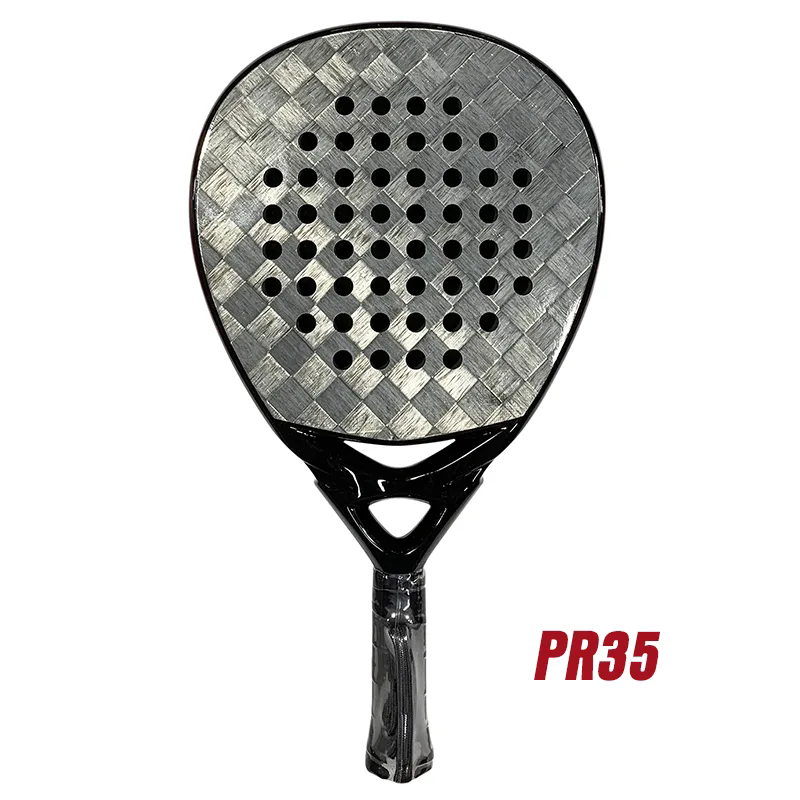What Makes a Padel Racket Stand Out in Performance and Design?
2025-10-24
In the rapidly expanding world of racket sports, padel has emerged as one of the most engaging and fast-paced games enjoyed worldwide. Combining elements of tennis and squash, this sport demands a unique piece of equipment — the padel racket. Unlike a traditional tennis racket, a padel racket has no strings and features a perforated solid surface made from advanced composite materials. Its design directly affects player control, speed, and power.
A padel racket’s importance goes far beyond aesthetics. It defines how a player performs on the court, influencing the accuracy of shots, the comfort of grip, and even the endurance during long matches. With the sport’s growing popularity across Europe, South America, and Asia, the choice of a high-performance padel racket has become crucial for both amateur and professional players seeking precision and balance.
What Defines a High-Quality Padel Racket?
Every padel racket is a blend of science, craftsmanship, and player-centered engineering. Its effectiveness depends on key factors such as materials, weight distribution, balance, and surface texture. To understand what makes a padel racket superior, it’s essential to look at its technical parameters:
| Parameter | Specification Range | Purpose / Effect |
|---|---|---|
| Shape | Round / Teardrop / Diamond | Affects power and control. Round offers control; diamond offers power; teardrop balances both. |
| Weight | 340–380 grams | Lighter rackets provide agility; heavier rackets generate more hitting power. |
| Core Material | EVA Foam / Polyethylene | Determines flexibility, vibration absorption, and comfort. |
| Surface Material | Carbon Fiber / Fiberglass / Graphite | Impacts durability and stiffness; carbon fiber is preferred for professional performance. |
| Balance Point | Low / Medium / High | Defines control and maneuverability; low balance aids control, high balance enhances attack shots. |
| Hole Pattern | 50–70 holes strategically arranged | Improves aerodynamics and ball control. |
A well-designed padel racket is engineered to provide stability, vibration reduction, and energy efficiency during impact. Advanced brands use 3K, 12K, or even 18K carbon fiber layers to reinforce the frame, ensuring minimal energy loss and optimal shot consistency.
In modern designs, EVA Soft foam cores are highly favored due to their ability to absorb vibrations and enhance player comfort. This results in a racket that not only performs efficiently but also protects the player’s arm and wrist during long games.
Why Innovation and Material Technology Shape the Future of Padel Rackets
As the sport evolves, so do the expectations for racket performance. Today’s manufacturers are integrating aerospace-grade carbon composites, 3D textured surfaces, and vibration-damping technologies to maximize performance under competitive conditions.
Why are these innovations so critical? Because they directly address three key performance challenges:
-
Power Optimization: Using multi-layer carbon structures enhances stiffness, transferring more energy from the player’s swing into the ball.
-
Precision and Control: Advanced hole patterns and hybrid surface textures improve aerodynamics, offering smoother and faster swings with precise ball direction.
-
Comfort and Injury Prevention: New vibration-absorbing foams and ergonomic handles reduce the risk of tennis elbow and fatigue, enabling longer, more comfortable play sessions.
Environmental sustainability is also influencing production trends. Many leading manufacturers now focus on eco-friendly resins and recyclable composite fibers, contributing to a greener manufacturing process without sacrificing quality.
How does this innovation translate to performance on the court? Players using high-tech rackets experience greater shot stability, improved touch on the ball, and a more consistent rebound — factors that can make the difference between a winning point and a missed opportunity.
Looking forward, the future of padel racket design will emphasize AI-assisted aerodynamics modeling, smart grip sensors for tracking performance metrics, and sustainable material engineering to meet global standards for professional and recreational use.
How to Choose the Right Padel Racket: A Player-Centric Approach
Choosing a padel racket depends on a combination of personal skill level, playing style, and physical strength. Understanding these factors allows players to select equipment that enhances their natural performance.
For beginners: A round-shaped racket with a soft EVA core and low balance point offers better control and forgiveness on off-center hits.
For intermediate players: A teardrop shape provides a balance between control and power, supporting players transitioning into advanced play.
For advanced players: A diamond-shaped racket with a carbon fiber surface and high balance delivers explosive power and maximum precision.
Below are some additional selection guidelines:
-
Grip Size: Ensure the grip fits comfortably to maintain firm control without overstraining the wrist.
-
Weight Distribution: Test both head-heavy and even-balanced rackets to identify what complements your swing style.
-
Surface Texture: Players seeking spin and aggressive shots should consider a rough or 3D surface for enhanced friction.
-
Durability: Opt for rackets with reinforced frame edges or carbon-protected layers to extend longevity.
Understanding these characteristics allows players to invest in rackets that enhance their performance and protect their joints over time.
Common Questions About Padel Rackets (FAQ)
Q1: What is the difference between a tennis racket and a padel racket?
A padel racket is smaller, solid, and has no strings, featuring perforated holes for aerodynamics. It’s designed for shorter, faster rallies typical in padel. A tennis racket, in contrast, uses strings for ball rebound and supports longer court distances.
Q2: How often should a padel racket be replaced?
A high-quality padel racket typically lasts between 12 to 18 months with regular use. However, professional players or frequent users might replace it every 6 to 9 months due to frame fatigue, foam compression, and wear on the surface material. Regular inspection for cracks and loss of rebound is essential for maintaining consistent performance.
The Future of Padel Rackets and the Role of Modern Manufacturers
The global padel market is experiencing significant growth, driven by both recreational participation and professional tournaments. With the sport gaining popularity across Europe, Asia, and the Americas, manufacturers are focusing on technological precision, material innovation, and aesthetic customization.
Next-generation padel rackets are expected to integrate data analytics sensors, allowing players to track swing speed, impact zones, and energy efficiency. Additionally, lightweight nanocarbon composites will make rackets more resistant while maintaining ultra-responsive playability.
As competition intensifies, brands that combine engineering excellence with player-centric design philosophy will define the market’s future. Each innovation not only enhances the player experience but also contributes to the global expansion of padel as a dynamic and inclusive sport.
Redefining Performance with Quality and Innovation
The evolution of the padel racket demonstrates how far technology and design have advanced in the pursuit of performance. From material selection to aerodynamic precision, every detail contributes to achieving a perfect balance between control, power, and comfort. For players seeking reliable, durable, and high-performing equipment, choosing a professionally engineered padel racket can elevate their game significantly.
Nanjing Sparkshot Technology Co., Ltd, a trusted name in sports equipment manufacturing, continues to innovate with precision-engineered padel rackets that combine durability, style, and superior performance. With a commitment to advanced materials and ergonomic design, the company strives to meet the needs of both professional and recreational players around the world.
For business collaborations or to learn more about premium padel rackets, contact us to discover how cutting-edge technology can transform your game.



